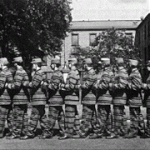2012 Annual George and Margaret Barrock Lecture on Criminal Law: The Accidental Crime Commission: Its Legacies and Lessons
 On October 4, 2012 Professor Franklin E. Zimring delivered the Annual George and Margaret Barrock Lecture on Criminal Law to a large audience of interested public, law students, faculty, and members of the legal profession. Professor Zimring is the William G. Simon Professor of Law and Wolfen Distinguished Scholar at the University of California, Berkeley School of Law.
On October 4, 2012 Professor Franklin E. Zimring delivered the Annual George and Margaret Barrock Lecture on Criminal Law to a large audience of interested public, law students, faculty, and members of the legal profession. Professor Zimring is the William G. Simon Professor of Law and Wolfen Distinguished Scholar at the University of California, Berkeley School of Law.
His subject was the origins and legacies of the so-called Wickersham Commission of 1929-1931. Since the Commission’s work is largely forgotten today, Professor Zimring assumed the burden of explaining how “this hopeless venture ended up being viewed as a precedent setting and positive contribution to the ways in which the national government learns about crime and criminal justice.” In this he succeeded, his remarks serving as a timely, thoughtful introduction to the Law School’s day-long conference on the Wickersham Commission that was held on October 5, 2012. (More on the conference in my next blog.)

